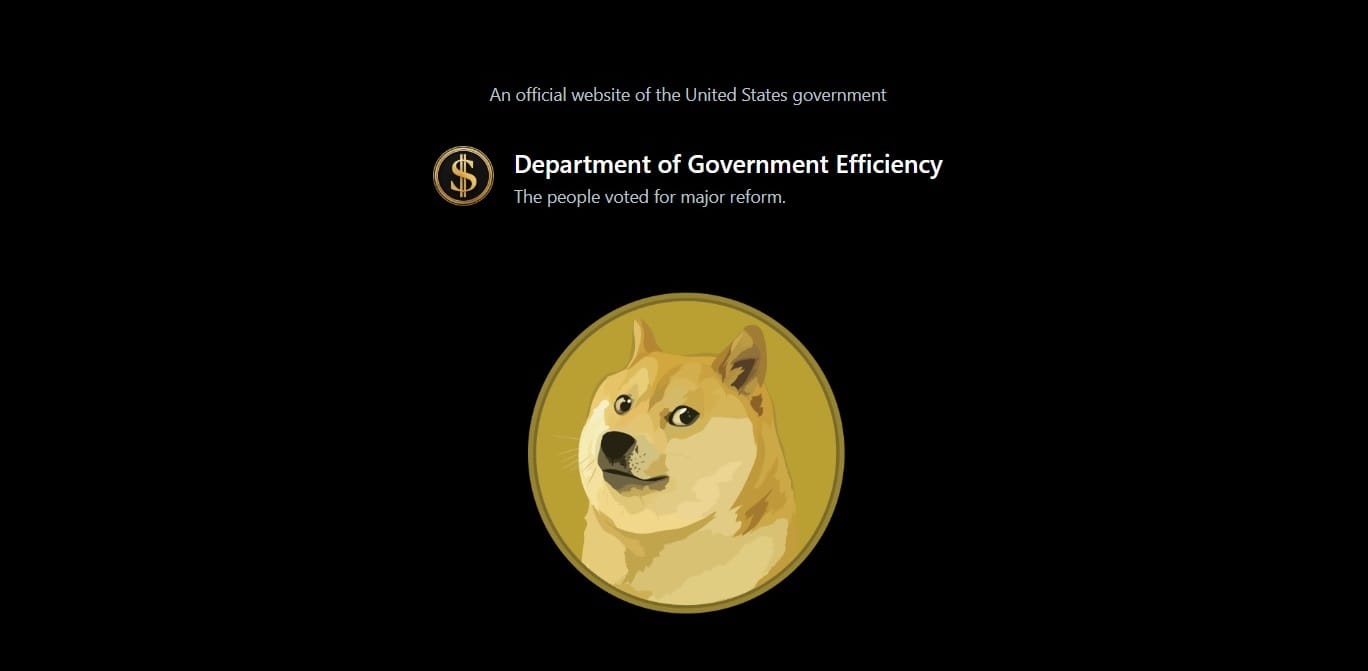Trump and Musk Unveil DOGE Website for Government Efficiency

In a bold move on the very first day of his presidency, Donald Trump, alongside Elon Musk, has launched the official website for the Department of Government Efficiency (DOGE), accessible at Doge.gov. This initiative, which has been a topic of much speculation and discussion, promises to usher in an era of significant reform within the U.S. government's operational structure.
The website, in its initial form, is notably minimalist, presenting a stark black background with plain white text. It proudly declares itself as "An official website of the United States government," followed by the statement "Department of Government Efficiency. The people voted for major reform." However, what captures immediate attention is the unexpected use of the Dogecoin logo, a cryptocurrency known for its meme origins but now evidently embraced in this governmental context.

The Symbolism of DOGE
The choice to feature the Dogecoin logo alongside the text about government efficiency is not merely whimsical; it's a direct nod to the cryptocurrency Dogecoin (DOGE), which inspired the very name of this department. Elon Musk, known for his affection towards Dogecoin, has played a pivotal role in this initiative, suggesting that the department's branding is both a tribute to and an extension of his interest in the cryptocurrency.
The use of the Dogecoin logo might initially seem humorous or trivial, given its roots in internet meme culture, which itself also plays into crypto with memecoins. However, it also serves as a strategic move by Trump and Musk to signal a break from traditional government imagery and an embrace of digital culture, particularly appealing to younger or tech-savvy demographics. The logo's inclusion hints at a broader strategy to leverage technology and cryptocurrency in administrative reforms, aiming to streamline bureaucracy, reduce wasteful expenditure, and enhance the efficiency of government agencies. By opting for a clean, uncluttered interface, the message seems clear: the focus is on function over form, on results rather than red tape.
Throughout Trump's campaign, he emphasized cutting unnecessary government spending and reducing regulatory burdens, themes that resonate with Musk's own philosophy of efficiency, particularly seen in his business ventures like Tesla and SpaceX. The launch of Doge.gov, inspired by Dogecoin and using its logo, could be seen as the first tangible step towards implementing these promises, with Musk's involvement adding a layer of credibility to the technological and operational overhaul envisioned.
As the website stands now, it does not delve into specifics about how these reforms will be enacted or what particular departments or regulations are targeted. This leaves room for speculation and discussion among both supporters and critics regarding the potential scope and impact of DOGE's activities. Will this department truly revolutionize how the government operates, or will it be another layer of bureaucracy under a different guise?
The choice to use a symbol like Dogecoin might also serve as a conversation starter, drawing public and media attention to what could otherwise be seen as another routine government initiative. By blending technology, finance, and internet culture, Trump and Musk are setting the stage for a narrative that challenges traditional views of government functionality, aiming to make efficiency not just a policy goal but a cultural shift.

